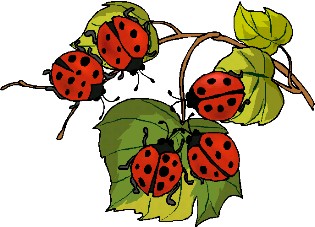Integrated pest management programs (IPM) promote the use of multiple cultural, biological, and chemical tactics to reduce the abundance of pest insects, while conserving pollinators and beneficial insects. Much research has focused on the impact of systemic neonicotinyl insecticides on the colony health and foraging behavior of bees, but few papers considered these impacts on pollen and nectar-feeding beneficial insects, such as parasitoids, lacewings, lady beetles, and butterflies. Contact insecticides only contaminate pollen and nectar of flowers that are open at the time of spraying. In contrast, soil-applied neonicotinyl insecticides are translocated to pollen and nectar of flowers for a longer duration, often months. Neonicotinyl seed-treated crops (imidacloprid, 0.11 mg/canola seed and 0.625 mg/corn seed) translocate less than 10 ppb to nectar and pollen. However, higher rates of soil-applied imidacloprid are used in urban landscapes and nurseries (270-300 mg/3gallon pot, 67g imidacloprid applied to soil surface for 24 diam. tree), which should result in residues higher than the 10 ppb in nectar and pollen compared to seed-treated crops. This study shows that the translocation of imidacloprid from soil (300 mg) to flowers of Asclepias curassavica resulted in imidacloprid residue in nectar of 6,000 ppb for 1X and 10,000 ppb for 2X treatments. A second imidacloprid soil application 7 months after the first resulted in residues of 21,000 ppb in 1X and 45,000 ppb in 2X treatments. Consequently, landscape use of imidacloprid applied to flowering plants can result in 697 to 1,162 times more imidacloprid in milkweed nectar compared to a seed treatment, where most research has focused. These higher residue levels caused significant mortality in both 1Xand 2X treatments at day 12 in three lady beetle species, Coleomegilla maculata, Harmonia axyridis, and Hippodamia convergens, but not a fourth species, Coccinella septempunctata. Survival and fecundity of two nymphalid butterfly species, monarch, Danaus plexippus and painted lady, Vanessa cardui, were not reduced when free-ranging butterflies foraged on 1X and 2X treated milkweed plants or when butterflies were force-fed lower amounts of imidacloprid (0 ppb, 15 ppb, or 30 ppb imidacloprid). However, larval survival was significantly reduced on plants treated with soil-applied imidacloprid at1X and 2X treatments. Consequently, the use of systemic, neonicotinyl insecticides, such as imidacloprid, increased the insecticide’s duration in pollen and nectar, and increased the insecticide’s exposure to beneficial insects, thereby increasing the risk of mortality.
Source:
Soil-applied imidacloprid is translocated to landscape flowers and reduced survival of adult
Coleomegilla maculata, Harmonia axyridis, and Hippodamia convergens lady beetles, but not
two species of butterflies
To be submitted online to Plosone by March 31 2014
Vera A. Krischik1, Mary Rogers2, Garima Gupta3, and Aruna Varshey4
1 Department of Entomology, University of Minnesota,
219 Hodson Hall, 1980 Folwell Ave., St. Paul, MN 55108 (corresponding author)
2 Department of Horticultural Science, University of Minnesota,
305 Alderman Hall, 1970 Folwell Ave., St. Paul, MN 55108
3. Garima Gupta garima79@in.com need address
4. arunaalok@gmail.com need address
http://www.entomology.umn.edu/cues/pollinators/2013%20research%20in%20p…

- Login om te reageren
